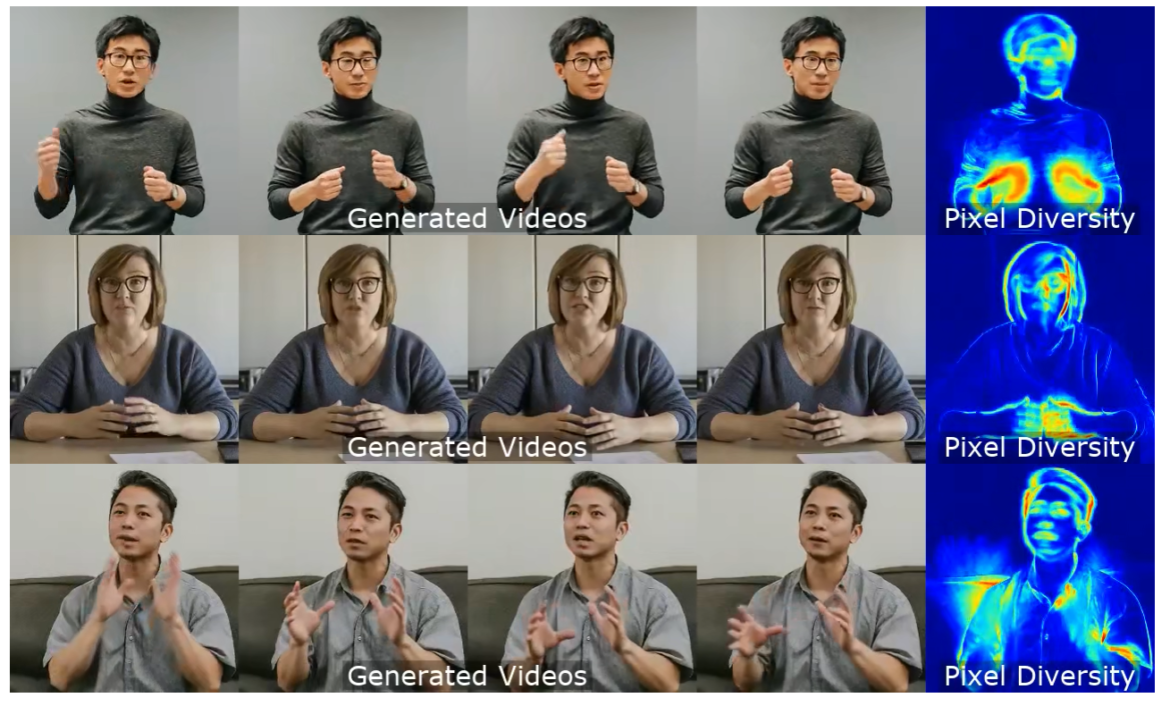The realm of artificial intelligence (AI) continues to push boundaries, and Google’s Vlogger AI proposed by Google Researcher is a prime example. This innovative technology bridges the gap between static images and dynamic videos, allowing users to create realistic video avatars with just a single photo.
Here’s a quick Demo video published on Vlogger Research around the same.
What is Vlogger AI?
Vlogger, which stands for “Multimodal Diffusion for Embodied Avatar Synthesis,” leverages the power of deep learning to create lifelike video representations from photos. Given an image of a person and an audio clip of their speech, Vlogger generates a video where the person appears to be speaking the words, complete with natural facial expressions, head movements, and even subtle gestures.
Technical Implementation:
Vlogger operates through a combination of deep learning models:
- Stochastic Human-to-3D Motion Diffusion Model: This model analyzes a large dataset of videos to learn the complex relationships between human movement, facial expressions, and audio. It essentially captures the statistical patterns of how humans move and express themselves when speaking.
- Text-to-Image with Spatial and Temporal Control: Building upon existing text-to-image models, Vlogger incorporates additional functionalities. It can not only generate an image based on a text description but also control the spatial and temporal aspects of the image, allowing for movement and animation.
The Process:
- Image Input: The process begins with a single photograph of the person you want to create the video avatar for.
- Audio Input: An audio clip of the person’s speech is provided. The audio acts as the driving force for the animation, telling the model what words to mouth and the overall tone of the voice.
- Deep Learning Magic: The image and audio are fed into the Vlogger models. The stochastic human-to-3D motion diffusion model analyzes the image to understand the person’s facial structure and posture. The text-to-image model with spatial and temporal control then uses the audio to generate a sequence of images depicting the person speaking, with their facial expressions and body movements aligned with the audio.
- Video Output: Finally, the sequence of generated images is stitched together into a high-resolution video, resulting in a realistic animation of the person speaking.
One of the main applications of this model is on video translation. In this case, VLOGGER takes an existing video in a particular language, and edits the lip and face areas to be consistent with new audios, e.g. in Spanish.
Benefits and Considerations:
Vlogger AI holds immense potential for various applications, including:
- Educational content creation
- Personalized virtual assistants
- Video game development
However, ethical considerations around deepfakes and the potential for misuse of the technology remain a concern. As Vlogger continues to evolve, ensuring responsible development and deployment will be crucial.
Future of Vlogger AI:
Vlogger represents a significant leap forward in AI-powered video generation. As the technology matures, we can expect further advancements in areas like:
- Increased realism of generated videos
- Enhanced control over facial expressions and body language
- Ability to handle a wider range of emotions and speaking styles
Vlogger AI paves the way for a future where creating engaging and personalized video content becomes more accessible. By understanding its technical core and acknowledging the potential challenges, we can navigate the exciting possibilities this technology offers.

